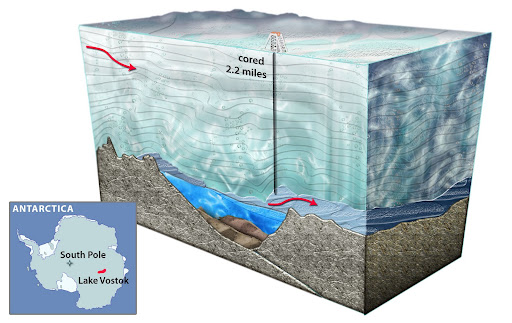Lake Vostok is the largest lakes found under the surface of Antarctica.
The lake is located beneath Russia's Vostok Station, 4,000 metres under the surface of the ice sheet. Lake Vostok covers an area of 15,690 square kilometres and thanks to the similarities to other lakes (Ontario in America and Lake Malawi in Africa) geologist could guess the period of its formation: about 65 million years ago, when Antarctica still had a tropical to subtropical climate.
Scientists found that the lake under the ice is not froze, and the temperature could vary between 18 C to -4 C, so life could still be there!!
Russians stopped to drill in January 2011 to avoid possible contaminations, and now scientific community is try to define a way to:
- Go down the 4000m of ice (without drilling)
- Sample the water avoiding the contamination of the water
It is very easy to guess that the space agencies are extremely interested in this unique place on Earth, because if they will be able to find some living organisms they might be evolved separately from the rest of the world for 65 million years!
I really suggest you to watch this documentary if you haven't seen it yet:







